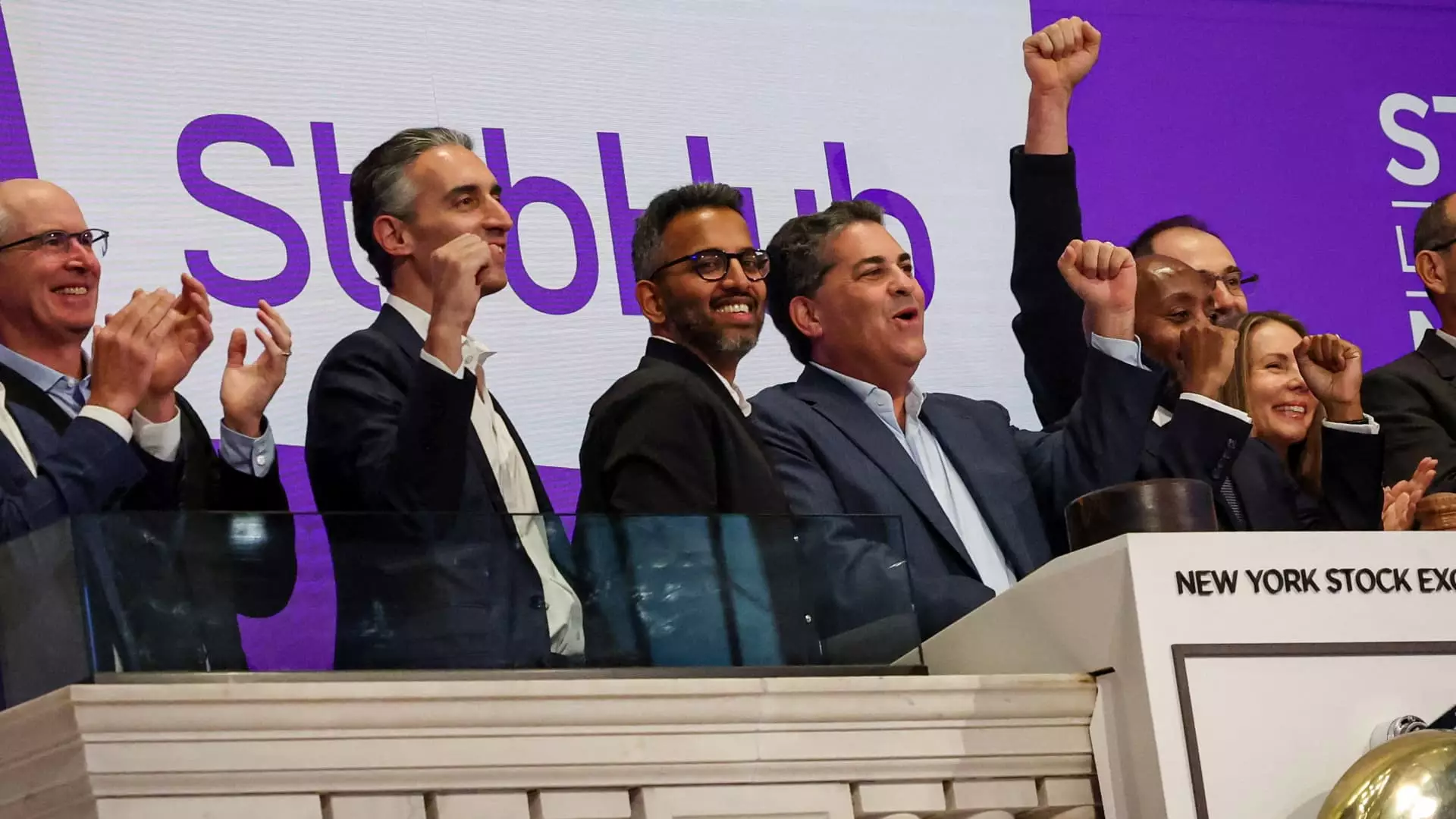StubHub’s highly anticipated IPO debut on the New York Stock Exchange was marred by a wave of market turbulence that underscored the fragility of timing in the financial world. Despite setting a price point that aligned with expectations—mid-range at $23.50—the company experienced a 5% decline immediately after trading commenced, highlighting the persistent volatility that continues to haunt many technology and consumer-focused firms. This decline was not merely a snapshot of investor hesitation but a reflection of broader market apprehensions lingering from recent tumultuous times, including the ripple effects of tariffs and geopolitical uncertainties. It’s a stark reminder that even well-established brands with a rich history and solid revenue streams are not immune to the shifting tides of investor sentiment.
While StubHub’s quick opening at $25.35 suggested initial optimism, the subsequent dip below its offering price signals skepticism about the company’s immediate value proposition and future growth prospects. This price fluctuation epitomizes the fleeting nature of market confidence, particularly for companies operating in sectors heavily influenced by external factors, such as the volatile live events industry. For StubHub, the timing of its IPO appears almost like a victim of circumstances—delayed previously by macroeconomic shocks and now watched closely as an indicator of investor appetite for the post-lockdown resurgence.
Questionable Valuations and the Uncertain Path Ahead
StubHub’s journey to this IPO was marked by convoluted ownership changes and strategic shifts. The company was once part of eBay’s portfolio, later reacquired by its founder Eric Baker in a deal valued at approximately $4 billion—significantly higher than its previous valuation. This transaction underscored what some might call an optimistic assessment of its growth potential, especially amid a frenzied market where tech and social companies have seen their valuations skyrocket. However, the IPO’s pricing—set squarely in the middle of the expected range—raised eyebrows among analysts questioning whether the market truly sees StubHub as worth that valuation amid slowing growth, especially with revenue growth of just 10% and a widened net loss.
It remains to be seen whether StubHub can sustain its growth trajectory given its dependence on volatile event-driven revenue streams. The reliance on blockbuster concerts and sporting events, which do generate billions in gross merchandise sales, also makes the company’s financial performance painfully unpredictable. Such lumpiness in earnings has always been a challenge for ticket platforms, and the recent fluctuations underscore that StubHub’s revenue model is as vulnerable as ever to external shocks—be it a pandemic resurgence or disruptions in live events.
The Competitive and Regulatory Minefield
The competitive landscape for StubHub is rife with formidable players, from Ticketmaster to Vivid Seats and SeatGeek, each vying for a slice of the lucrative ticket resale market. The tension intensifies with legal and regulatory pressures, particularly from the FTC. The agency’s scrutiny over ticketing practices, especially concerning “junk fees” and the circumvention of purchase limits via bots, puts added pressure on StubHub’s operations and margins. The federal warning over fee disclosures reflects a broader push for transparency, a move that might shake up revenue models founded on surcharges and fees.
Furthermore, the ongoing investigations into Ticketmaster’s practices highlight an industry fraught with regulatory uncertainty. StubHub’s proximity to such scrutiny is a reminder that its future success hinges not only on internal strategy but also on navigating a complex legal environment that can dramatically reshape the landscape overnight. For investors and stakeholders, these regulatory risks introduce another layer of unpredictability that tempers any enthusiasm sparked by recent IPO surges.
The Future: Resilience or Risk?
Despite the challenges, StubHub’s rebound in live event sales post-pandemic offers a glimmer of hope. The palpable demand for concerts and major sporting events demonstrates the resilience of the live entertainment industry. However, this resurgence raises questions about the sustainability of StubHub’s business model in a rapidly evolving digital ecosystem.
As it transitions into the public markets, the company faces a delicate balancing act. It must capitalize on the growing appetite for live events while managing regulatory compliance, competitive pressures, and the inherent lumpiness of its revenue streams. The IPO’s disappointing immediate performance signals a market that is cautious—perhaps even skeptical—about StubHub’s immediate growth prospects. Whether this company can leverage its backlog of loyal customers and adapt to industry pressures will ultimately define its trajectory in the years to come.
StubHub’s offering was supposed to mark a triumphant comeback for a once-burgeoning ticket marketplace. Instead, it revealed a stark truth: in the realm of high-stakes public offerings, timing, regulatory clarity, and investor confidence are just as pivotal as the underlying business fundamentals. The road ahead will test whether StubHub can reinvent itself within this complex ecosystem or become another cautionary tale of ambitious market entries driven by hype rather than clear-cut prospects.

